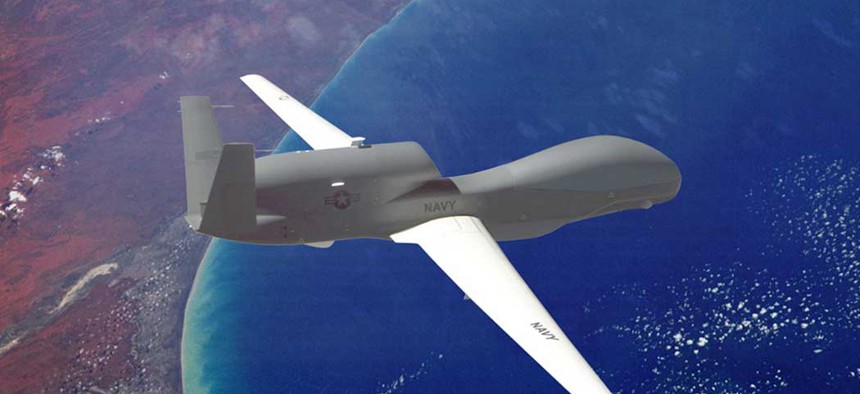Despite cuts elsewhere, US drone market is growing
A recent report by Govini finds that the U.S. government’s spending on UAS has grown 6 percent over the last five years.
It’s no secret that unmanned aerial systems such as the Predator and Reaper have become a favored tool of the U.S. national security architecture for the counterterrorism fight, and a new report backs that up, showing that, despite cost-cutting in other areas, the military is continuing to invest in drones.
The United States is continuing to modernize and adapt to emerging threats, through initiatives such as the Third Offset Strategy, which involves smaller, expendable, tactical UASs developed for various capabilities, including swarming. A recent report published by government market analyst Govini expounds on this phenomena, discovering that, despite sequestration, the unmanned aerial systems (UAS) market saw a 6 percent compound annual growth rate over the last five years.
The report, titled “Market View: Unmanned Aerial Systems in Defense,” found that defense spending on UASs was nearly $14 billion over the last five years, peaking in fiscal 2012. The breakdown of services is:
- Army: represents 42 percent of the market procurement, with 200 RQ-7 Shadow purchases from Textron Systems.
- Air Force: represents 37 percent of market, awarding over $1 billion in fiscal year 2015 alone to General Atomics and Northrop Grumman for the MQ-9 Reaper and RQ-4 Global Hawk, respectively.
- Navy: represents 14 percent of the market, with peak contract sale award totals in fiscal year 2012 with an ISR-as-a-service contract to Boeing.
The Defense Department last summer announced that daily combat air patrols – which typically consist of four aircraft and enable the force to rotate aircraft into the sky for constant 24/7 monitoring of a particular area – will increase from the current 60 to 90 by 2019. The Air Force will maintain its current 60 CAPs, the Army will contribute up to 16, Special Operations will provide up to four, and contractors will provide an additional 10 ISR-only – not lethal – CAPs.
The report also discovered that while the Navy contracts were most competitive, the Army contracts were most lucrative. The Air Force’s contracts were least competitive, due to the specificity of mission requirements.
The Navy had until recently been testing and demonstrating for a potential surveillance and/or strike capability using the Northrop Grumman X-47B Salty Dog for the Unmanned Carrier-Launched Airborne Surveillance and Strike, known as UCLASS. Issues such as dithering on a platform focused on strike versus surveillance beset the program, though the program did achieve major milestones with the first successful unmanned system landing on an aircraft carrier and the first unmanned system to achieve aerial refueling. Recently, however, the Navy surprised most by announcing the program would be scrapped and restricted to the Carrier Based Aerial Refueling System program described by GAO as “an unmanned system designed to conduct automated aerial refueling of other carrier-based aircraft, as well as provide some intelligence, surveillance, and reconnaissance capability.”
“This program increases air wing capability by freeing strike aircraft in a combat mission via its refueling missions, preserving strike fighter fatigue life while enhancing the long endurance capability of the air wing,” Deputy Assistant Secretary of the Navy for Budget Rear Adm. William Lescher told reporters in February about CBARS, or as he referred to the new design, RAQ-25.
Four contractors make up 66 percent of the awards for UAS in the defense sector, totaling $9 billion. General Atomics was the top with over $4 billion, Northrop came in at second with less than half of that, Textron came in third with 10 percent of the market and Boeing with 7 percent. Northrop and General Atomics make up 50 percent of the Defense UAS market.




